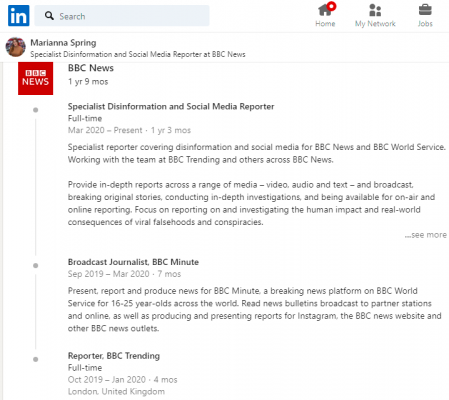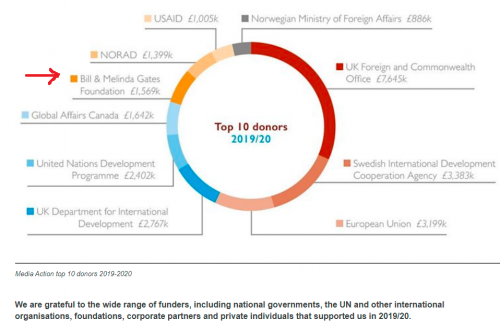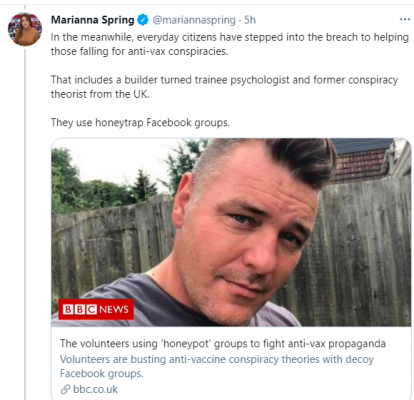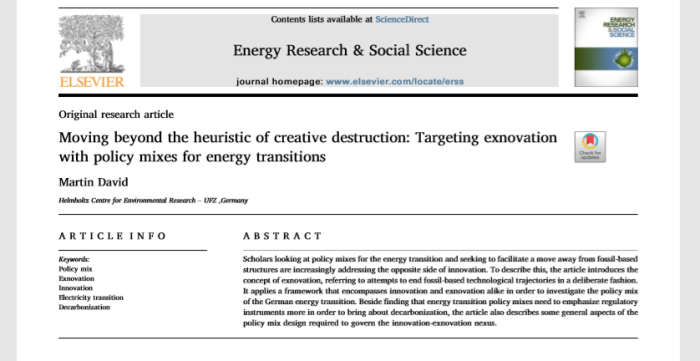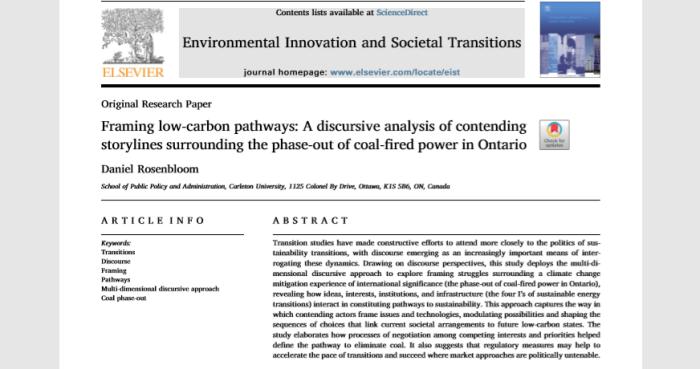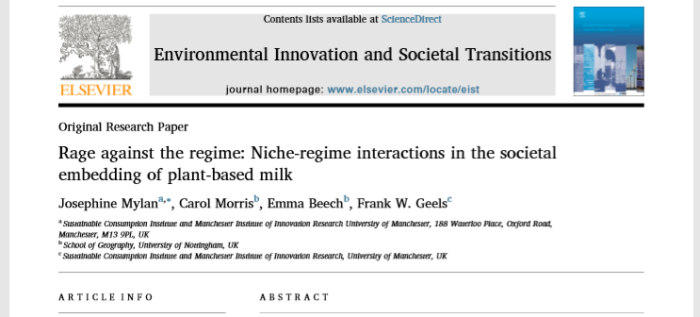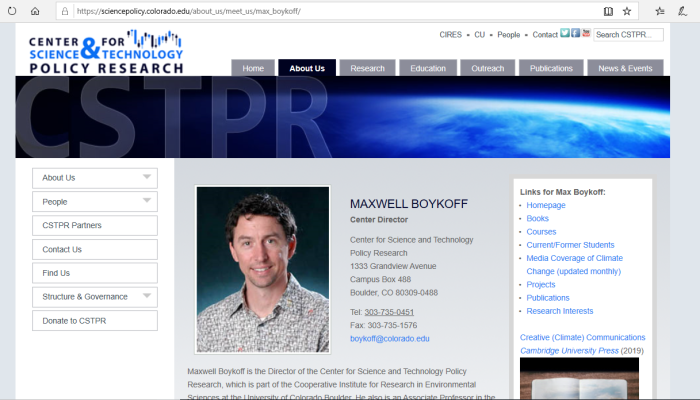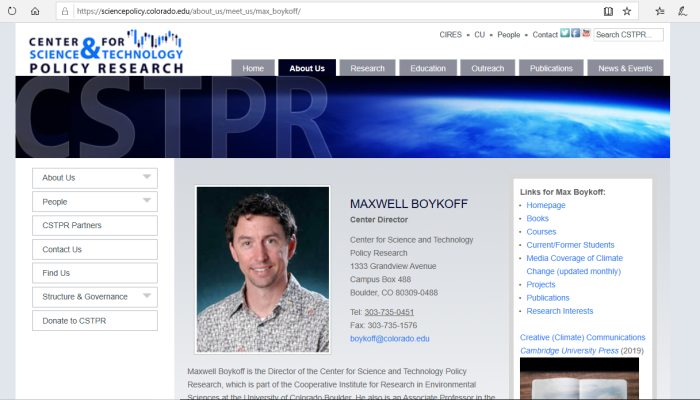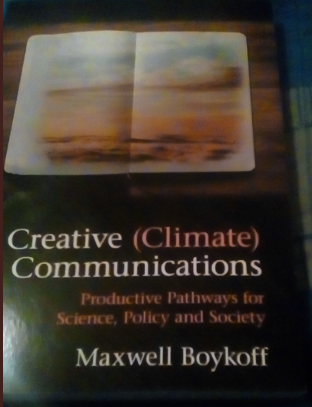
This is a follow-up to an earlier article. Various groups, which claim to be fighting “misinformation” are actually run by political operatives in Canada. Some of the grants that Canadian taxpayers shell out are also listed. The previous piece will provide a lot of background.
Now the question remains: what do their finances look like? Since many of these groups are in fact registered charities, this information is freely available.
The description as “counter intelligence” is fitting here. While claiming to promote the idea of fairness and openness in the electoral process, these companies won’t ever give the full picture. They’ll never address topics like central banking, the climate change hoax, the “pandemic” psy-op, or many hard questions. In fact, some of these groups run “disinformation” campaigns to prevent the truth about CV from getting out.
The Cambridge Dictionary defines counter intelligence as: “secret action taken by a country to prevent another country from discovering its military, industrial, or political secrets”. However, instead of a struggle between 2 countries, it’s one between government and its people.
Lenin’s famous quote applies here: the best way to control the opposition is to lead it ourselves.

Ongoing programs:
ADVANCING EDUCATION BY INCREASING CANADIAN YOUTH AWARENESS AND UNDERSTANDING OF THE VOTE IN CANADIAN ELECTIONS AND PARTICIPATE IN THE CANADIAN DEMOCRATIC PROCESS THROUGH THE USE OF MULTIMEDIA, ART, FILM, TV, INTERNET PROJECT, WRITTEN MATERIALS, SEMINARS, LECTURES.
[2019 tax information]
Receipted donations $5,000.00 (0.36%)
Non-receipted donations $14,580.00 (1.06%)
Gifts from other registered charities $220,520.00 (15.96%)
Government funding $1,064,684.00 (77.06%)
All other revenue $76,923.00 (5.57%)
Total revenue: $1,381,707.00
Charitable programs $1,174,140.00 (86.07%)
Management and administration $190,027.00 (13.93%)
Fundraising $0.00 (0.00%)
Political activities $0.00 (0.00%)
Gifts to other registered charities and qualified donees $0.00 (0.00%)
Other $0.00 (0.00%)
Total expenses: $1,364,167.00
[2020 tax information]
Receipted donations $30,200.00 (1.35%)
Non-receipted donations $17,083.00 (0.76%)
Gifts from other registered charities $265,000.00 (11.86%)
Government funding $1,724,916.00 (77.21%)
All other revenue $196,872.00 (8.81%)
Total revenue: $2,234,071.00
Charitable programs $1,855,731.00 (88.87%)
Management and administration $232,460.00 (11.13%)
Fundraising $0.00 (0.00%)
Gifts to other registered charities and qualified donees $0.00 (0.00%)
Other $0.00 (0.00%)
Total expenses: $2,088,191.00
The Apathy Is Boring Project claims to try to increase public participation in elections by producing educational content on how the process works.

Ongoing programs:
CIVIX IS A CIVIC EDUCATION CHARITY DEDICATED TO BUILDING THE HABITS OF ACTIVE AND INFORMED CITIZENSHIP AMOUNG YOUTH. STUDENT VOTE IS THE FLAGSHIP PROGRAM OF CIVIX. COINCIDING WITH OFFICIAL ELECTION PERIODS, STUDENTS LEARN ABOUT GOVERNMENT AND THE ELECTORAL PROCESS, DISCUSS RELEVANT ISSUES AND CAST BALLOTS FOR THE OFFICIAL ELECTION CANDIDATES. CIVIX ALSO OFFERS OTHER INITIATIVES BETWEEN ELECTIONS, INCLUDING GOVERNMENT BUDGET CONSULTATIONS FOR YOUTH (STUDENT BUDGET CONSTULATION), COODINATED VISITS BETWEEN STUDENTS AND THEIR ELECTED REPRESENTATIVES (REP DAY), AND PROFESSIONAL DEVELOPMENT OPPORTUNITIES FOR TEACHERS (DEMOCRACY BOOTCAMP) AND DIGITAL MEDIAL LITERACY THAT AIMS TO HELP STUDENTS DEVELOP THE SKILLS AND HABITS TO BE CRITICAL CONSUMERS OF INFORMATION.
.
New programs:
CIVIX EXPANDED ITS PROGRAMMING TO COLOMBIA.
[2018 tax information]
Receipted donations $51,570.00 (2.31%)
Non-receipted donations $83,463.00 (3.74%)
Gifts from other registered charities $550,846.00 (24.70%)
Government funding $1,536,915.00 (68.91%)
All other revenue $7,393.00 (0.33%)
Total revenue: $2,230,187.00
Charitable programs $2,429,729.00 (92.06%)
Management and administration $140,741.00 (5.33%)
Fundraising $68,780.00 (2.61%)
Political activities $0.00 (0.00%)
Gifts to other registered charities and qualified donees $0.00 (0.00%)
Other $0.00 (0.00%)
Total expenses: $2,639,250.00
[2019 tax information]
Receipted donations $25,000.00 (0.49%)
Non-receipted donations $85,822.00 (1.67%)
Gifts from other registered charities $831,491.00 (16.16%)
Government funding $3,483,769.00 (67.70%)
All other revenue $719,631.00 (13.99%)
Total revenue: $5,145,713.00
Charitable programs $4,691,097.00 (94.81%)
Management and administration $162,708.00 (3.29%)
Fundraising $93,850.00 (1.90%)
Political activities $0.00 (0.00%)
Gifts to other registered charities and qualified donees $0.00 (0.00%)
Total expenses: $4,947,655.00
CIVIX is a registered charity in Canada that claims to promote democracy in locally. Apparently, it’s also involved with elections in Colombia as well. Glad to know that public money is used to meddle with another country’s leadership.
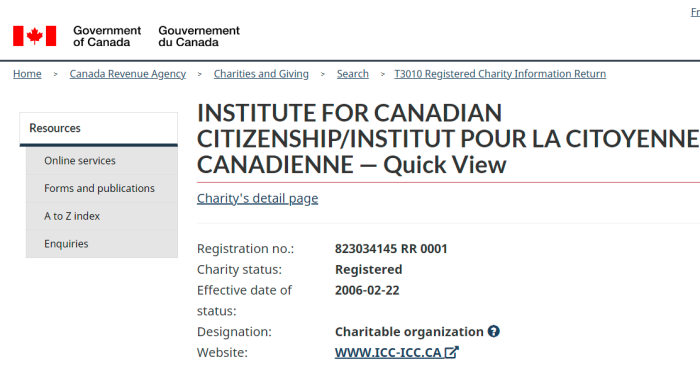
Ongoing programs:
ICC HOSTS CITIZENSHIP CEREMONIES ACROSS THE COUNTRY. THE COMMUNITY CITIZENSHIP CEREMONIES ARE A CELEBRATION OF CANADA’S NEWEST CITIZENS AND OFFER UNIQUE OPPORTUNITIES TO REFLECT ON WHAT IT MEANS TO BE ACTIVE AND ENGAGED CITIZENS. CANOO IS A MOBILE APP THAT PROVIDES FREE ADMISSION FOR NEW CANADIAN CITIZENS TO MUSEUMS, SCIENCE CENTRES, ART GALLERIES, PARKS AND HISTORIC SITES ACROSS CANADA. THE APP OFFERS FREE ADMISSION FOR EVERY NEW CITIZEN AND UP TO 4 CHILDREN DURING THE FIRST YEAR OF THEIR CITIZENSHIP. THE CANOO APP IS AVAILABLE FOR FREE ON THE APPLE STORE AND GOOGLE PLAY. 6 DEGREES IS A GLOBAL FORUM THAT BRINGS PEOPLE TOGETHER TO EXCHANGE IDEAS AND CREATE CONVERSATION IN ORDER TO MOTIVATE POSITIVE CHANGE IN ATTITUDES, BEHAVIOR AND POLICY. IT IS ABOUT INCLUSION, CONNECTION, ARTISTIC REPRESENTATION, ENGAGEMENT AND THE POWER THAT COMES FROM BRINGING PEOPLE TOGETHER TO OPEN HEARTS AND CHANGE MINDS.
.
New programs:
Operations Outside Canada
2 countries
.
GERMANY
MEXICO
[2019 tax information]
Receipted donations $238,781.00 (4.57%)
Non-receipted donations $1,268,590.00 (24.30%)
Gifts from other registered charities $0.00 (0.00%)
Government funding $3,553,256.00 (68.06%)
All other revenue $160,196.00 (3.07%)
Total revenue: $5,220,823.00
Charitable programs $4,595,568.00 (89.02%)
Management and administration $386,970.00 (7.50%)
Fundraising $180,044.00 (3.49%)
Political activities $0.00 (0.00%)
Gifts to other registered charities and qualified donees $0.00 (0.00%)
Other $0.00 (0.00%)
Total expenses: $5,162,582.00
[2020 tax information]
Receipted donations $208,421.00 (7.00%)
Non-receipted donations $809,716.00 (27.20%)
Gifts from other registered charities $6,962.00 (0.23%)
Government funding $1,840,232.00 (61.81%)
All other revenue $112,074.00 (3.76%)
Total revenue: $2,977,405.00
Charitable programs $3,478,136.00 (86.56%)
Management and administration $371,785.00 (9.25%)
Fundraising $168,425.00 (4.19%)
Gifts to other registered charities and qualified donees $0.00 (0.00%)
Other $0.00 (0.00%)
Total expenses: $4,018,346.00
Institute for Canadian Citizenship was started up by Adrian Clarkson, former Governor General of Canada. While claiming to promote citizenship for new Canadians, the NGO is active in gaslighting with claims of racism, and promoting the disinformation narrative. In short, it functions like a media arm of the Federal Government, while pretending to be neutral.
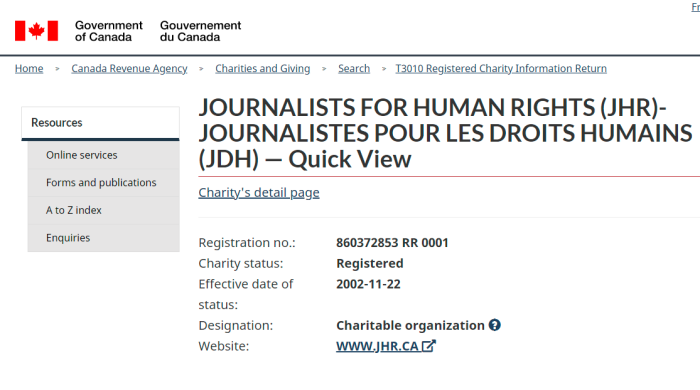
Programs and activities:
.
Ongoing programs:
Educate African journalists about human rights; Educate African public about human rights via media; Award journalists for excellent human rights reporting; Educate Canadian students about human rights; Educate Canadian Aboriginal journalists about human rights; Educate Canadian public about human rights through media; Educate Jordanian journalists about human rights; Educate Syrian journalists about human rights.
New programs:
Operations Outside Canada
11 countries
- CONGO, DEMOCRATIC REPUBLIC
- KENYA
- JORDAN
- SYRIAN ARAB REPUBLIC
- TUNISIA
- MALI
- IRAQ
- YEMEN
- MAURITANIA
- UGANDA
- SOUTH SUDAN
[2019 tax information]
Receipted donations $155,295.00 (5.29%)
Non-receipted donations $247,342.00 (8.42%)
Gifts from other registered charities $0.00 (0.00%)
Government funding $1,736,550.00 (59.10%)
All other revenue $799,066.00 (27.20%)
Total revenue: $2,938,253.00
Charitable programs $2,441,992.00 (85.63%)
Management and administration $245,459.00 (8.61%)
Fundraising $164,388.00 (5.76%)
Political activities $0.00 (0.00%)
Gifts to other registered charities and qualified donees $0.00 (0.00%)
Total expenses: $2,851,845.00
[2020 tax information]
Receipted donations $211,784.00 (7.60%)
Non-receipted donations $17,110.00 (0.61%)
Gifts from other registered charities $0.00 (0.00%)
Government funding $1,866,127.00 (66.98%)
All other revenue $691,054.00 (24.80%)
Total revenue: $2,786,075.00
Charitable programs $2,621,360.00 (93.10%)
Management and administration $147,657.00 (5.24%)
Fundraising $46,742.00 (1.66%)
Political activities $0.00 (0.00%)
Gifts to other registered charities and qualified donees $0.00 (0.00%)
Total expenses: $2,815,759.00
Journalists for Human Rights is another such group. While it may seem harmless enough to promote human rights abroad, it’s worth noting that these groups remain silent on what happens in Canada. They say nothing about the martial law and medical tyranny imposed on the people who help fund them.
JHR also helps fund “Disinfo Watch”, a supposedly independent website devoted to debunking conspiracy theories about the “pandemic”.
Simon Fraser University (BC) and Ryerson University (Ontario) are listed as being organizations to counter misinformation. Both are registered charities, according to the Canada Revenue Agency.
These are just some of the media influencers working in Canada to misinform and deceive the public. And they are partially funded with tax dollars.
(1) https://www.canada.ca/en/canadian-heritage/news/2019/07/backgrounder–helping-citizens-critically-assess-and-become-resilient-against-harmful-online-disinformation.html
(2) https://www.sciencepresse.qc.ca/
(3) https://www.apathyisboring.com/
(4) https://apps.cra-arc.gc.ca/ebci/hacc/srch/pub/dsplyQckVw?q.srchNm=apathy+is+boring&q.stts=0007&selectedFilingPeriodIndex=1&selectedCharityBn=859483349RR0001&isSingleResult=false
(5) https://nmc-mic.ca/
(6) https://civix.ca/
(7) https://apps.cra-arc.gc.ca/ebci/hacc/srch/pub/dsplyRprtngPrd?
(8) https://www.ewc-rdc.ca/pub/en/mission_history
(9) https://www.canadahelps.org/en/charities/institute-for-canadian-citizenshipinstitut-pour-la-citoyennete-canadienne/
(10) https://www.globalvision.ca
(11) https://www.inclusion.ca/
(12) https://www.jhr.ca/
(13) https://apps.cra-arc.gc.ca/ebci/hacc/srch/pub/dsplyRprtngPrd?q.srchNm=journalists+for+human+rights&q.stts=0007&selectedCharityBn=860372853RR0001&dsrdPg=1
(14) www.mcgill.ca/maxbellschool/
(15) https://mediasmarts.ca/
(16) www.newcanadianmedia.ca
(17) https://newsmediacanada.ca
(18) https://www.ryerson.ca/arts/research-and-innovation/democratic-engagement-exchange/
(19) http://www.samaracanada.com
(20) swna.com
(21) www.sfu.ca/dialogue.html
(22) www.vubblepop.com
(23) https://canucklaw.ca/media-subsidies-to-counter-online-misinformation-groups-led-by-political-operatives/
(24) https://canucklaw.ca/taxpayer-grants-to-fight-misinformation-in-media-including-more-pandemic-bucks/
(25) https://canucklaw.ca/more-pandemic-bucks-for-disinformation-prevention-locally-and-abroad-civix/
(26) https://canucklaw.ca/phac-supporting-science-up-first-online-counter-misinformation-group/
(27) https://canucklaw.ca/disinfowatch-ties-to-atlas-network-connected-to-lpc-political-operatives/







